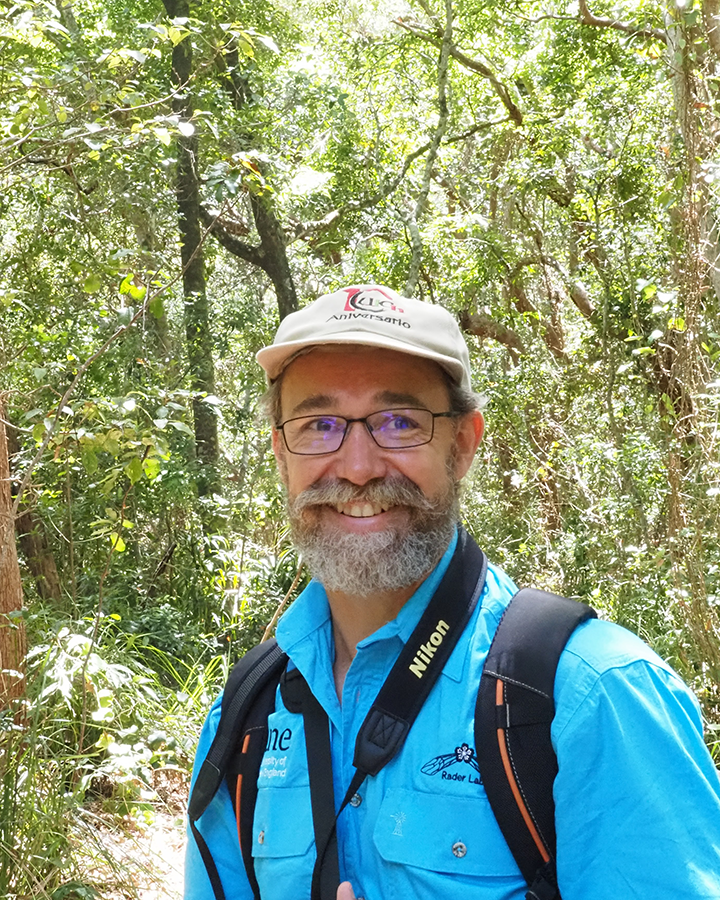Dr Davic Perović
Lecturer in Community Ecology - School of Environmental and Rural Science

Email: dperovic@une.edu.au
Biography
David is a Lecturer in Community Ecology, within the School of Environmental and Rural Science. He has a PhD in Entomology (Charles Sturt University), and Bachelor of Science (Honours) (University of Queensland), and has held Post-Doctoral Research Fellowships at The University of Göttingen (Germany), Fujian Agriculture and Forestry University (China) and at UNE. His research focuses on how non-crop areas in agricultural landscapes interact with management practices to shape insect communities and the ecosystem services they provide.
Qualifications
BSc Hons (University of Queensland)
GradDip GIS & Remote Sensing (Charles Sturt University)
PhD (Charles Sturt University)
Awards
Runner-Up, Student Poster, ISBCA Conference, Christchurch, New Zealand, 2009.
Best Student Paper, Australian Entomological Society Conference, Orange, Aus, 2008.
Teaching Areas
BIOL120 Organisms and Diversity of Life
BOTY390 Field Botany
ECOL311/511 Ecology of Australian Vegetation
ERS381/581 Project Report in Environmental and Rural Sciences
QMER100 Foundational Quantitative Methods for Environmental and Rural Sciences
SCI501/502 Special Topics in Science A
Primary Research Area/s
Landscape ecology; Plant and animal traits and trophic trait linkages; Habitat Management/Habitat Manipulation; Conservation Biological Control; Pollination Ecology; Pollinator HealthResearch Supervision Experience
I have experience supervising masters and PhD students in landscape ecology, functional traits and habitat manipulation.
Publications
Le Provost G, Schenk NV, Penone C, […PerovićDJ …], Wilcke W, Manning P (2023). The supply of multiple ecosystem services requires biodiversity across spatial scales. Nature Ecology & Evolution 7, 236-249.
Müller S, GossnerMM, Penone C, […PerovićDJ…], Westphal C, Scherer-Lorenzen M (2022). Land-use intensity and landscape structure drive the acoustic composition of grasslands. Agriculture, Ecosystems & Environment 328, 107845.
Perović DJ, Gámez-Virués S, Landis DA, Tscharntke T, Zalucki MP, Saura S, Furlong MJ, Desneux N, Sciarretta A, Balkenhol N, Schmidt JM, Trematerra P, Westphal C (2022). Broadening the scope of empirical studies to answer persistent questions in landscape-moderated effects on biodiversity and ecosystem functioning. Advances in Ecological Research. 65, 109-131.
Le Provost G, Thiele J, Westphal C, […PerovićDJ…], Zaitsev AS, Manning P (2021). Contrasting responses of above- and belowground diversity to multiple components of land-use intensity. Nature Communications 12 (1):1234567890.
Karp DS, Chaplin-Kramer R, Meehan TD, […PerovićDJ…], Yoshioka A, Zou (2018). Crop pests and predators exhibit inconsistent responses to surrounding landscape composition. Proceedings of the National Academy of Sciences of the United States of America 14, E7863-E7870.
Perović DJ, Gámez-Virués S, Landis DA, Wäckers F, Gurr GM, Wratten SD, You MS, Desneux N (2018). Managing biological control services through multi-trophic trait interactions: review and guidelines for implementation at local and landscape scales. Biological Reviews 93, 306-321.
Gossner MM, Lewinsohn TM, Kahl T, […PerovićDJ…], Weisser WW, Allan E (2016). Land-use intensification causes multitrophic homogenization of grassland communities. Nature 540, 266–269.
Gurr GM, Lu Z, Zheng X, […PerovićDJ…], Wratten SD & Heong KL (2016). Multi-country evidence that crop diversification promotes ecological intensification of agriculture. Nature Plants 2, 16014.
Gámez-Virués S, Perović DJ, Gossner MM, Börschig C, Blüthgen N, de Jong H, Simons NK, Klein A-M, Krauss J, Maier G, Scherber C, Steckel J, Rothenwöhrer C, Steffan-Dewenter I, Weiner CN, Weisser W, Werner M, Tscharntke T & Westphal C (2015). Landscape simplification filters species traits and drives biotic homogenization. Nature Communications 6, 8568.
Perović DJ, Gámez-Virués S, Börschig C, Klein A-M, Krauss J, Steckel J, Rothenwöhrer C, Erasmi S, Westphal C (2015). Configurational landscape heterogeneity shapes functional community composition of grassland butterflies. Journal of Applied Ecology 52, 505-513.
Dhileepan K, Lockett CJ, Balu A, Murugesan M, Perović DJ, & Taylor DBJ (2015). Life cycle and host range of Phycita sp., a leaf-webber rejected for biological control of prickly acacia in Australia. Journal of Applied Entomology 139, 800–812.
Perović DJ, & Gurr GM (2012). Geostatistical analysis shows species-specific habitat preferences for parasitoids. Biocontrol Science and Technology 22, 243–247.
Perović DJ, Gurr GM, Simmons AT & Raman A (2011). Rubidium labelling demonstrates movement of predators from native vegetation to cotton. Biocontrol Science & Technology 21, 1143–1146.
Perović DJ, Gurr GM, Raman A & Nicol HI (2010). Effect of landscape composition and arrangement on biological control agents in a simplified agricultural system: A cost–distance approach. Biological Control 52, 263–270.
Perović DJ, Johnson M-L, Scholz B & Zalucki MP (2008). The mortality of Helicoverpa armigera (Hübner) (Lepidoptera: Noctuidae) neonate larvae in relation to drop-off and soil surface temperature: the dangers of bungy jumping. Australian Journal of Entomology 47, 289–296.
Book Chapters
Gurr GM, Perović DJ, LeMotte K & Heimoana V (2018). Pests, predators and parasitoids. In D Hunter, L Guarino & C Spillane (Eds.), Routledge Handbook of Agricultural Biodiversity: Taylor Francis Group.
Scherber C, Lavandero B, Meyer KM, Perović DJ, Visser U, Wiegand K, & Tscharntke T (2012). Scale effects in biodiversity and biological control: methods and statistical analysis. In GM Gurr, SD Wratten, WE Snyder & DMY Read (Eds.), Biodiversity and Insect Pests: Key Issues for Sustainable Management (pp. 123–138): 2012 John Wiley & Sons, Ltd.

